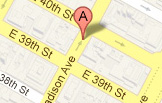By Melissa Guseynov, Esq
When polled most adults say they view higher education as a necessary step to achieving financial success and stability. However, as the cost of education continues to rise, their children are being forced to borrow in increasing amounts. While the surge in educational debt is worrisome, an even larger concern is private student loans. Private loans are a riskier way to finance education than through their federally subsidized counterparts.
In 2010, student loan debt in the United States exceeded $1 trillion. In fact, Americans now owe more on student loans than on credit cards. When incurring educational loan debt, students (and their parents) are often told not to worry about the substantial amount of the debt they carry because of the future investment being made. While higher education is considered to be a sound investment, it does not necessarily correlate to a high paying job, particularly given the current economic climate and dismal job market. Thus, more and more students graduate with potentially crushing debt and without the ability to service it.
Even President Obama recently noted that “[f]or the first eight years of our marriage, [Michelle and I] were paying more in student loans than what we were paying for our mortgage.” In addition, William E. Brewer, Jr., president of the National Association of Consumer Bankruptcy Attorneys, agrees. The student loan crisis, he says, “could very well be the next debt bomb for the U.S. economy.”
A practical solution to the growing problem is to allow some student loans (both federal and private) to be discharged in bankruptcy. Federally subsidized student loans have been non-dischargeable in bankruptcy since 1998, except in rare cases involving “undue hardship.” The undue hardship standard is nearly impossible to satisfy as the bankruptcy courts grapple with the issue. As part of the 2005 amendments to the Bankruptcy Code, lobbyists to private lenders succeeded in making private student loans virtually bullet-proof in bankruptcy.
There is little disagreement that students borrowing money for education have a responsibility to repay their debt. Yet paying back tens of thousands of dollars of debt while graduating in the midst of a stagnant employment market may be impossible for some. This is particularly so for those with private loans. Private borrowers may be saddled with higher interest rates and fewer repayment options than those with federally subsidized student loans. Some believe allowing relief to deserving individuals through bankruptcy is a reasonable and fair solution. If so, a change in the Bankruptcy Code is required to offer some relief to students (and their parents).
To set the matter out of the bankruptcy court’s discretion, Congress must review and modify the rule against non-dischargeability of federal and private educational loans in bankruptcy cases. There is legislation currently pending in both the House (H.R. 2028, “Private Student Loan Bankruptcy Fairness Act”) and Senate (S. 1102, “Fairness for Struggling Students Act”) that will restore bankruptcy relief for some private student loans. These pending bills are one attempt to resolve the crisis with respect to private loans. At the same time, there is more work to be done to implement a fair solution for lenders as well as borrowers to ensure the student loan debt mountain does not engulf a generation and morph into the next credit bubble.
We will be following the status of both of these bills. Check back for additional posts describing new developments and, perhaps, different perspectives.






